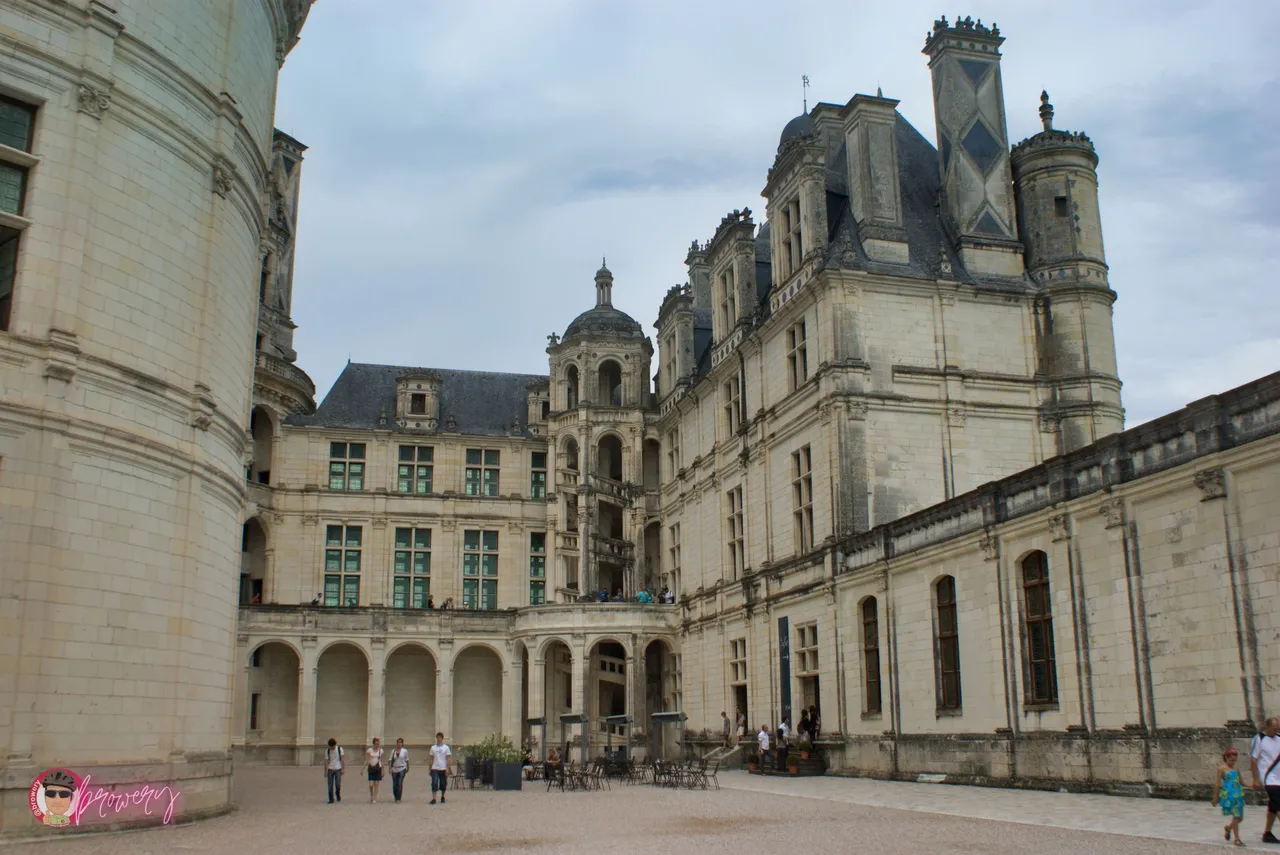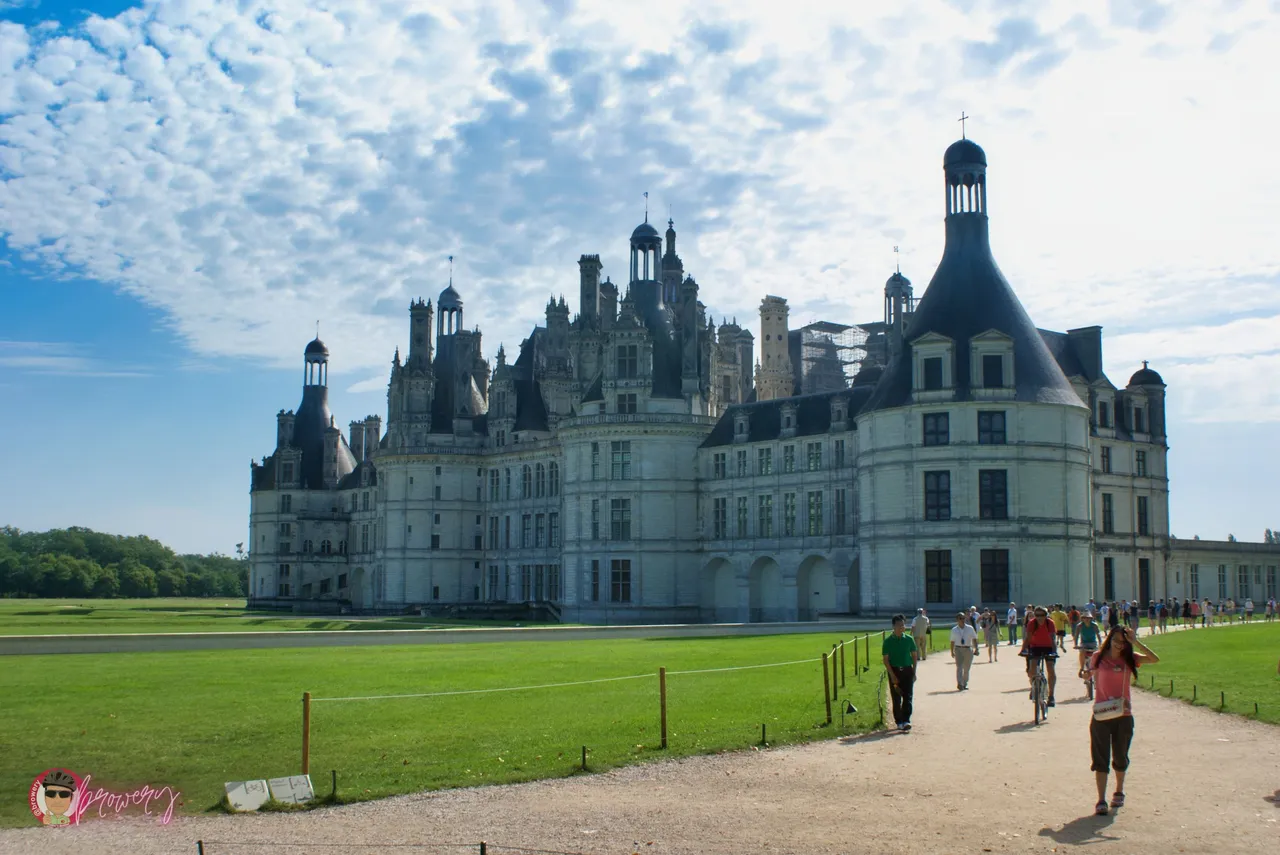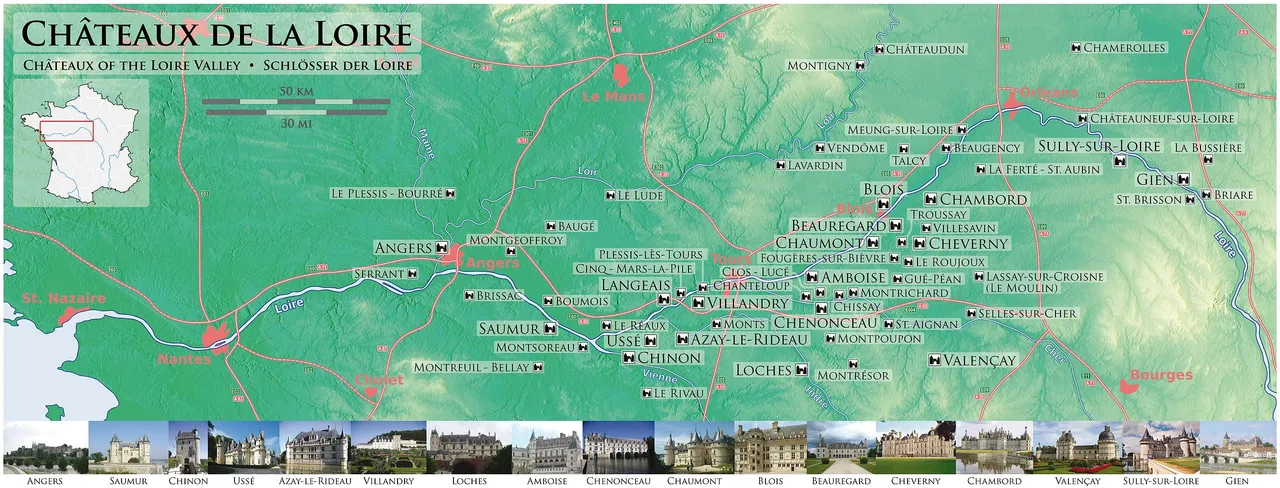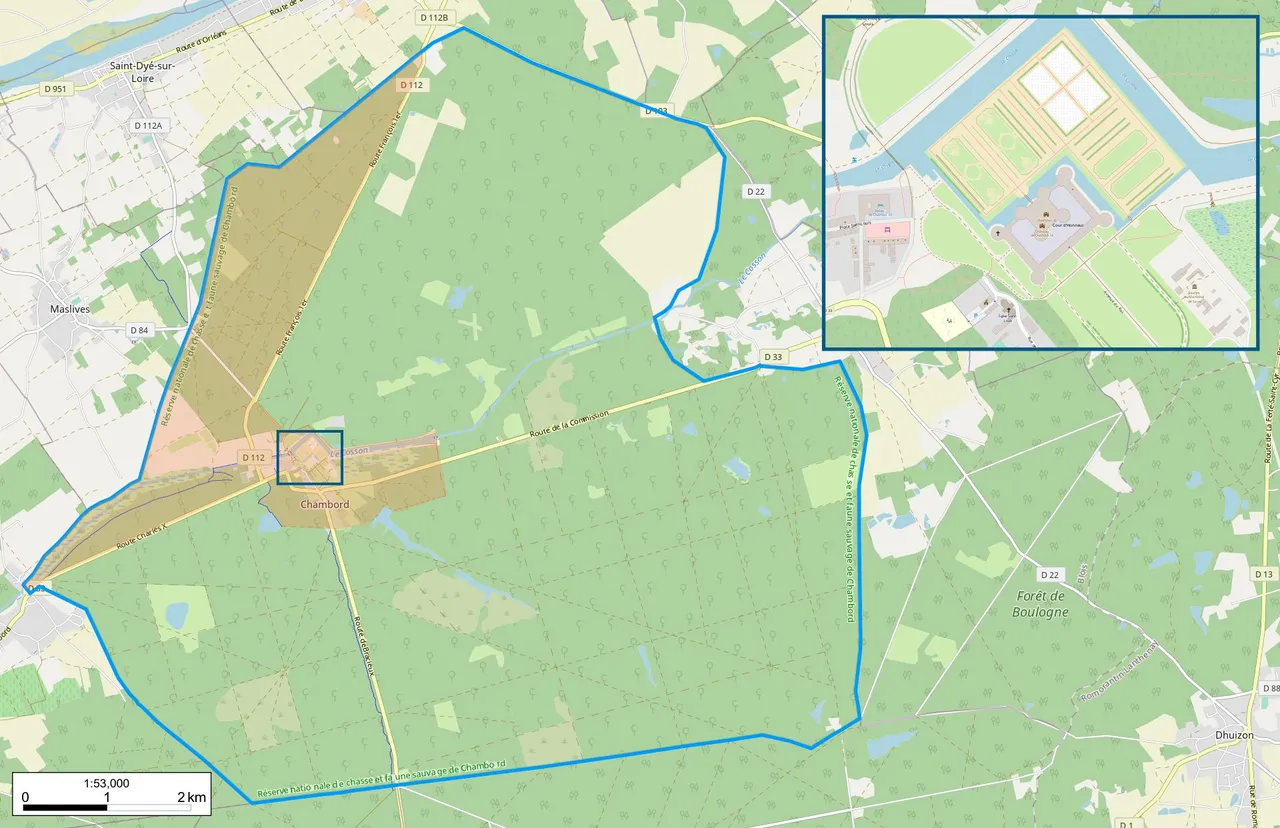
[EN] Located north-west of Paris - the Loire Valley is a natural region stretching along the river and its tributaries. A variety of landscapes can be found here: the cereal fields of Beauce, north of the river, the lakes and forests of Sologne south of the Loire were the hunting grounds of the kings of France.
[PL] Położona na północny-zachód od Paryża - Dolina Loary jest naturalnym regionem rozciągającym się wzdłuż rzeki i jej dopływów. Znajdziemy tu różnorodne krajobrazy: pola zbóż w Beauce, na północ od rzeki, jeziora i lasy Sologne na południe od Loary były ulubionymi terenami polowań królów Francji.
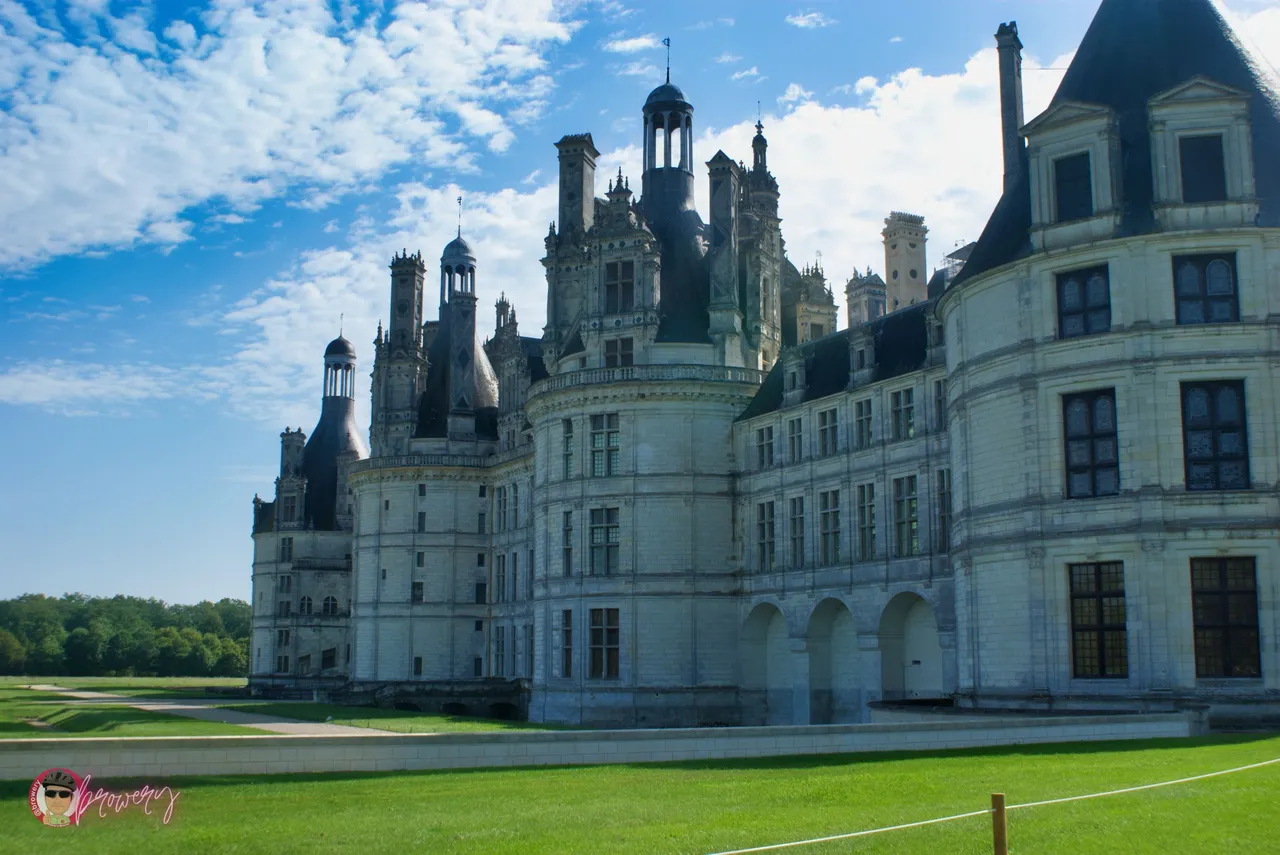
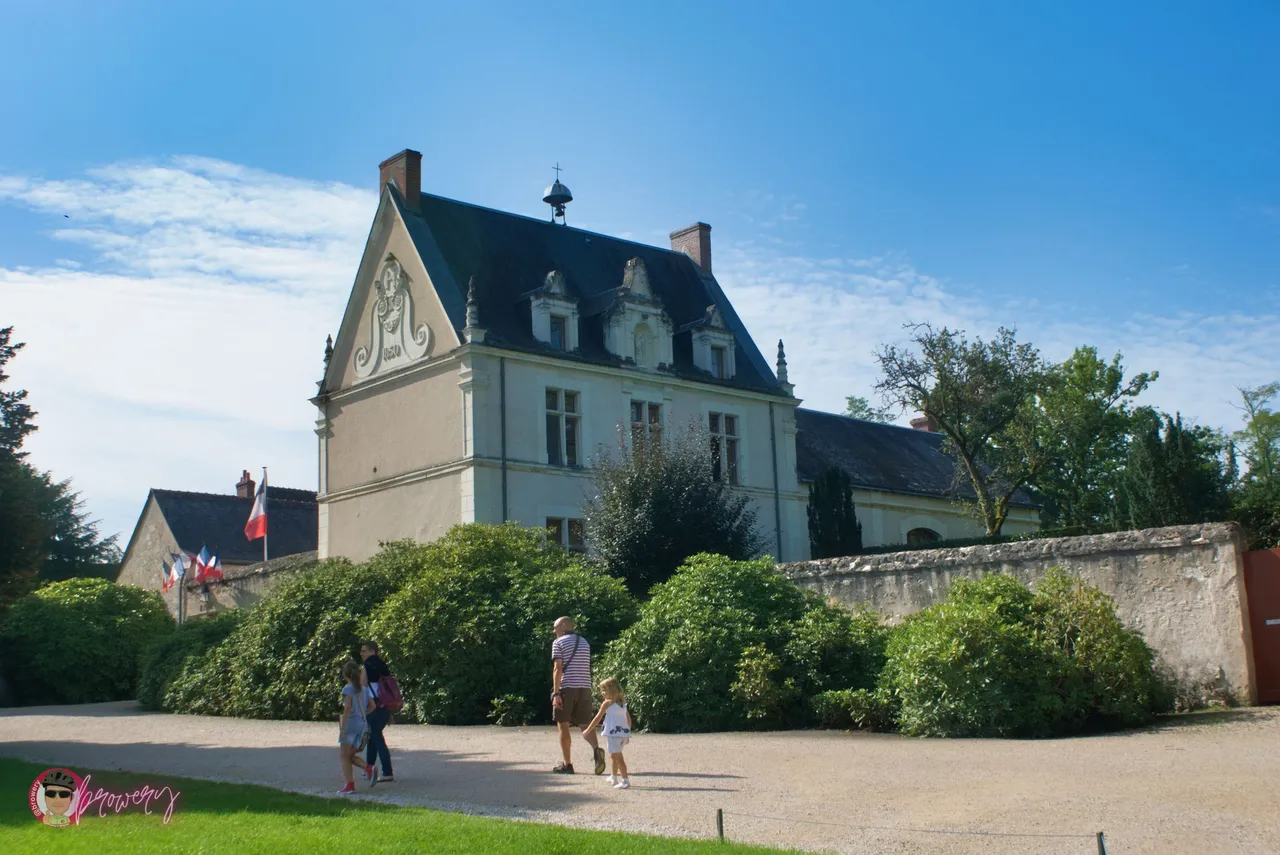
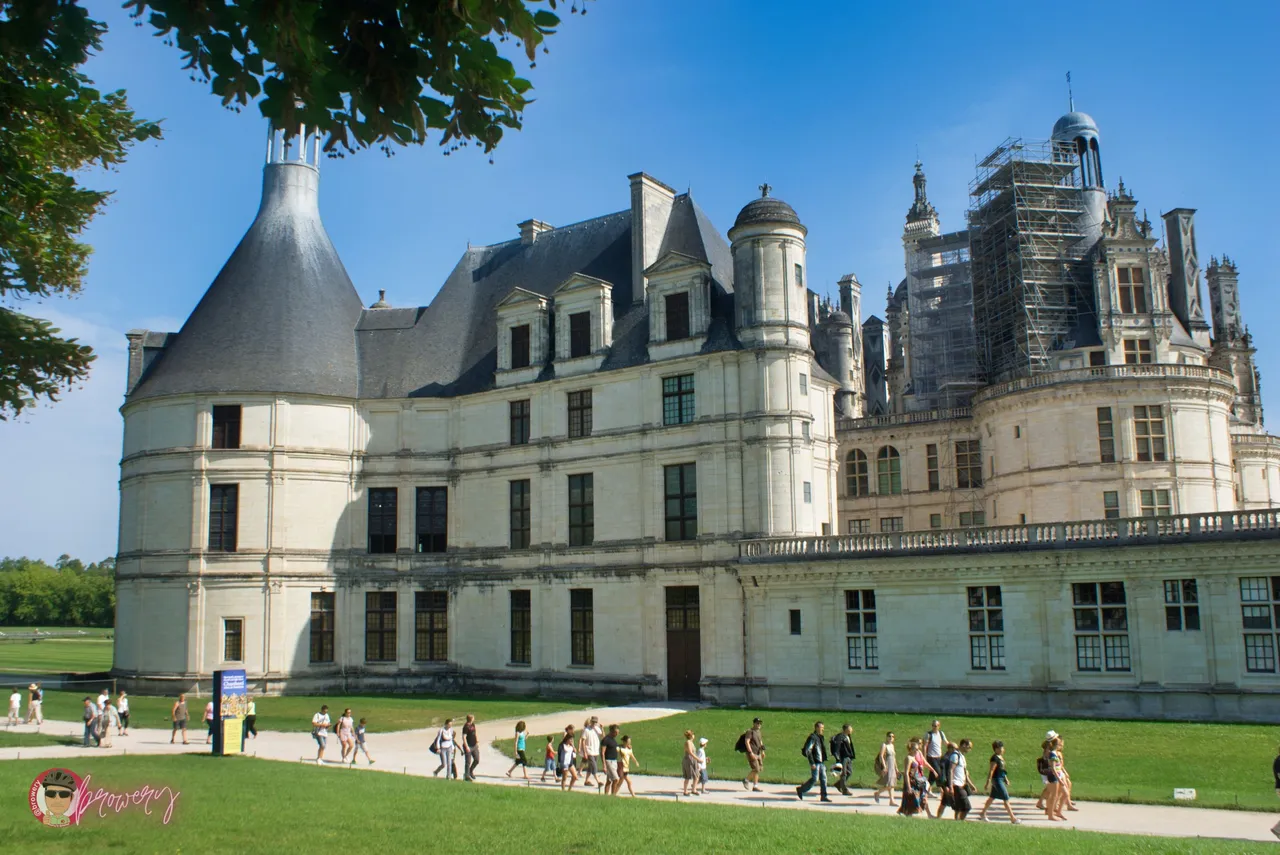
[EN] In the Middle Ages, from the 10th to the 15th century, the Loire Valley was the scene of constant fighting, the final accent of which was the Hundred Years' War, with the miraculous liberation of Orléans by forces lead the brave Joan of Arc. The end of the Hundred Years' War in 1450 ushered in a new era in the Loire Valley, with Charles VII and Louis XI ordering or authorising the construction of what would later become known as the Castles of the Loire.
[PL] W średniowieczu od X do XV wieku, Dolina Loary była sceną nieustających walk, których ostatnim akcentem była wojen stuletnia, z cudownym wyzwoleniem Orleanu przez dzielną Joannę d’Arc. Koniec wojny stuletniej w 1450 roku zapoczątkował nową erę w Dolinie Loary, a Karol VII i Ludwik XI nakazali lub zezwolili na budowę tego, co później miało być znane jako zamki nad Loarą.
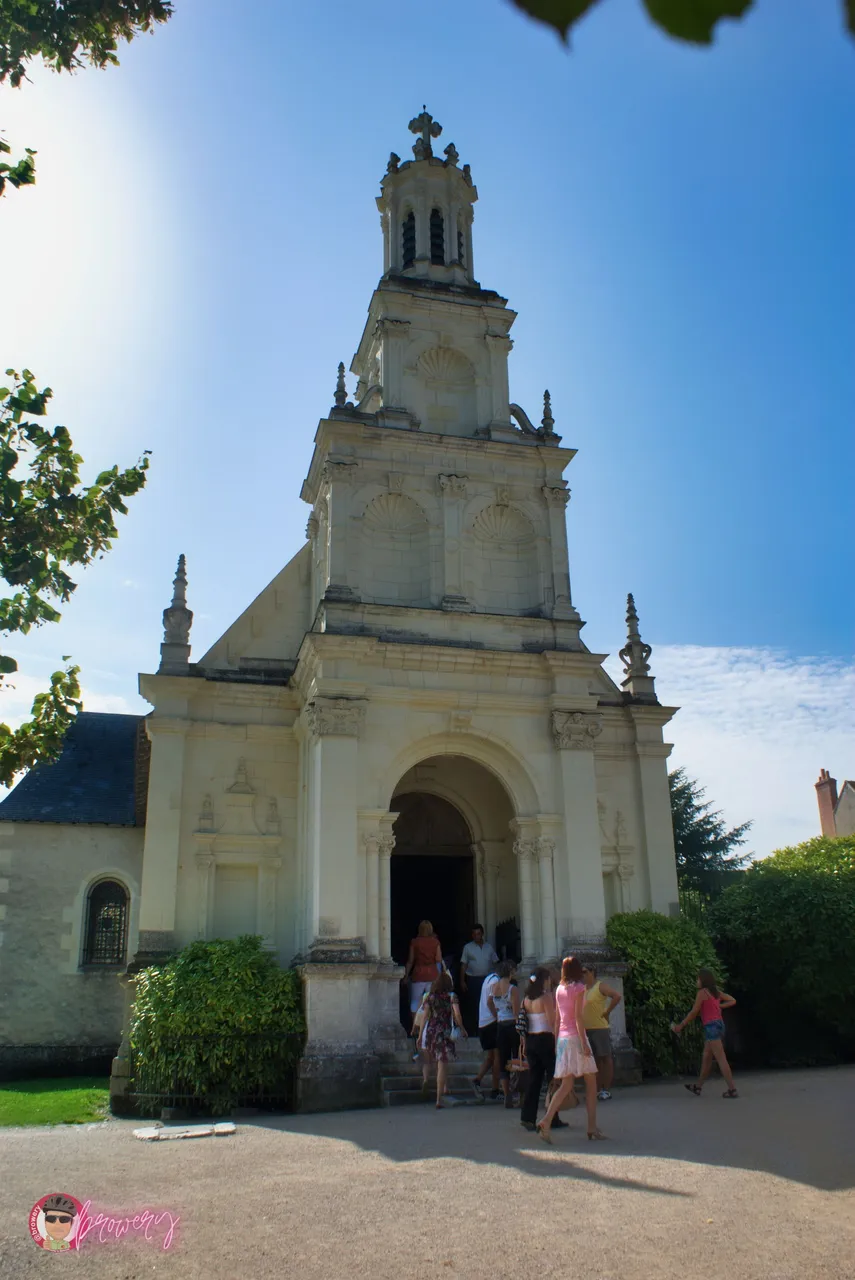 | 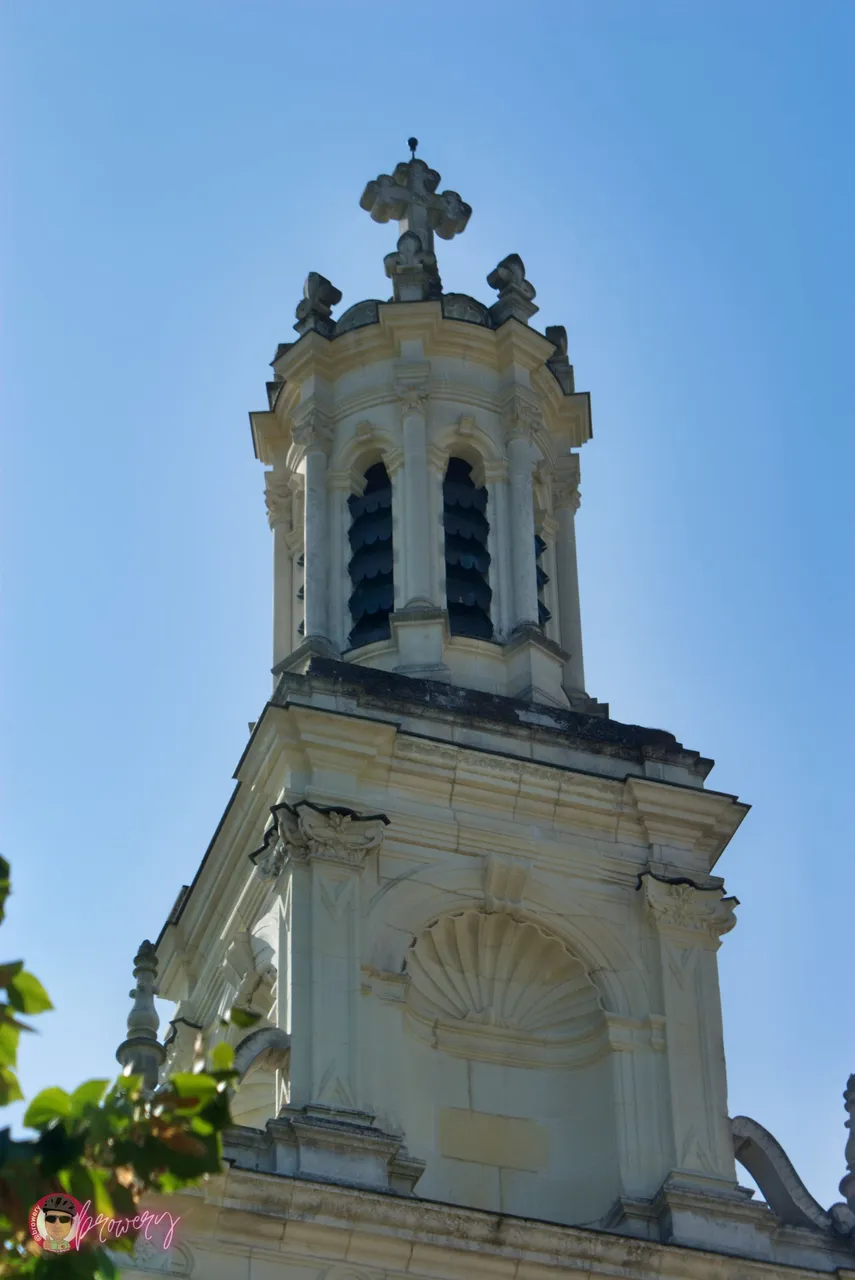 |
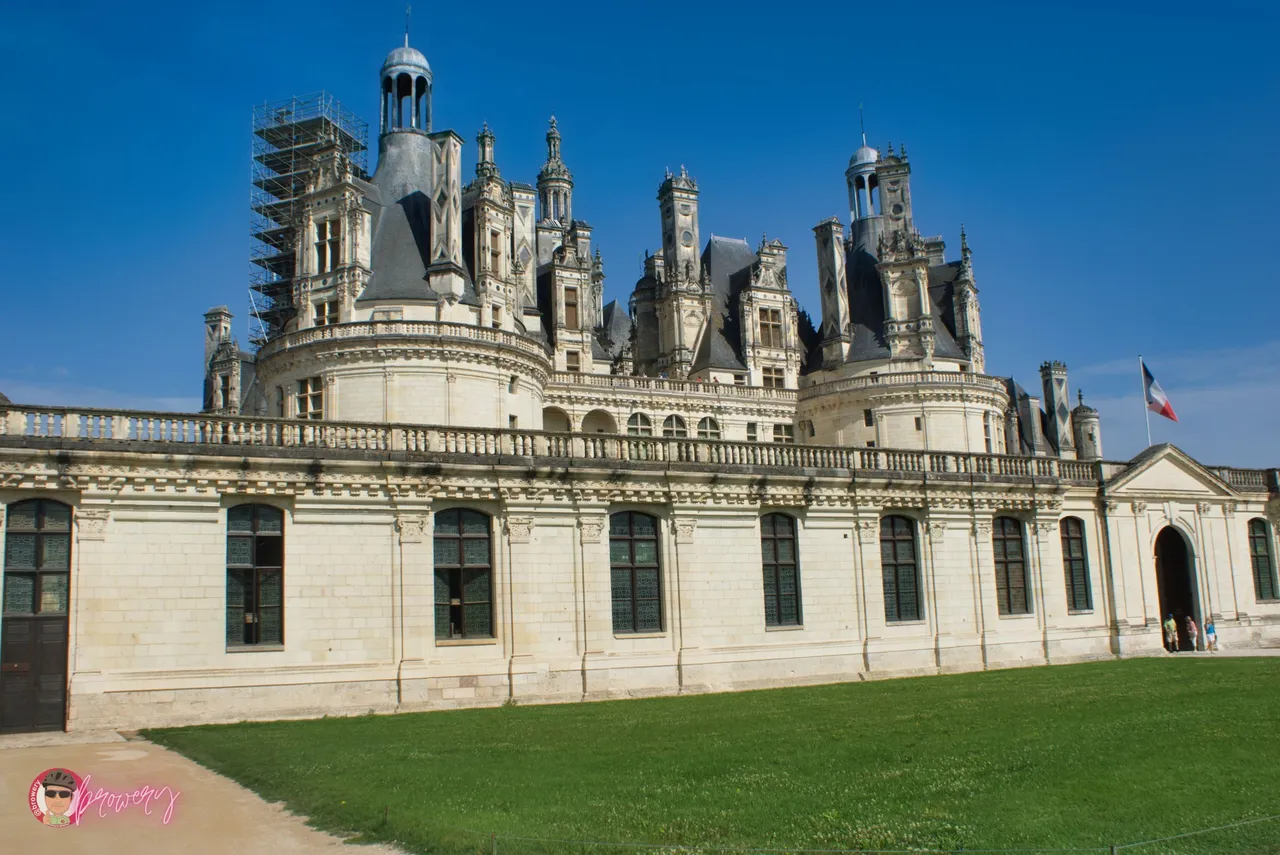
[EN] The Renaissance saw the apogee of the region's prosperity in the Kingdom of France. Charles VII and Louis XI made Tours their capital, which only at the end of the 16th century was moved to Paris by Henry IV. French kings and members of the aristocracy, fascinated by the Italian Renaissance, brought Italian artists and craftsmen to the Loire Valley to design magnificent buildings and gardens. In addition to rebuilding the royal castles at Amboise and Blois, they built "hunting lodges" in the area to the best of their ability, and the possibilities were enormous, as we can see today as we travel through the beautiful landscapes of the Loire Valley.
[PL] W okresie renesansu nastąpiło apogeum rozkwitu regionu w Królestwie Francji. Karola VII i Ludwika XI uczynili z Tours stolicę, która dopiero pod koniec XVI wieku została przeniesiona do Paryża przez Henryka IV. Francuscy królowie oraz przedstawiciele arystokracji zafascynowani włoskim renesansem sprowadzali nad Loarę włoskich artystów i rzemieślników z zadaniem projektowania wspaniałych budowli i ogrodów. Oprócz przebudowy królewskich zamków w Amboise i Blois wznosili w na tych terenach „domki myśliwskie” na miarę swoich możliwości, a możliwości były ogromne, o czym możemy przekonać się obecnie podróżując pośród pięknych krajobrazów Doliny Loary.
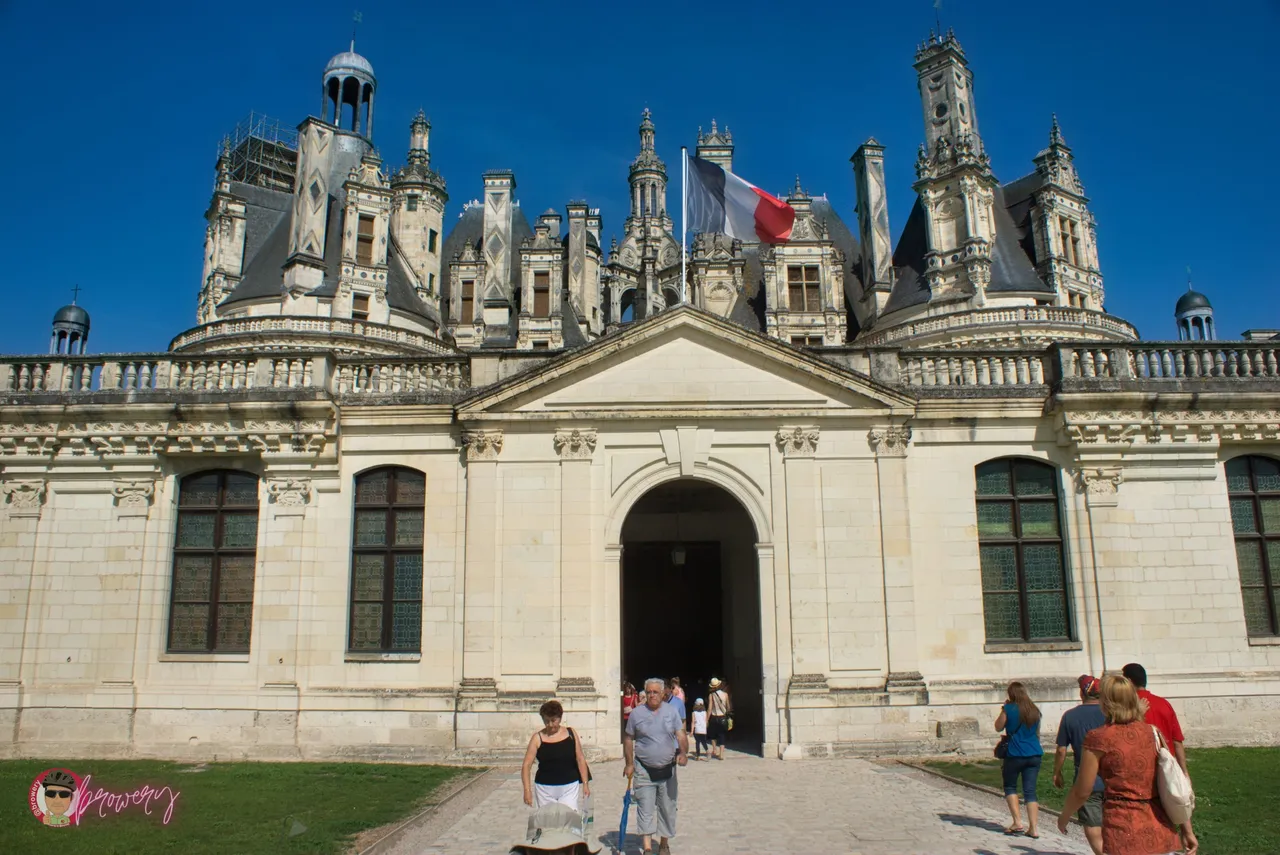
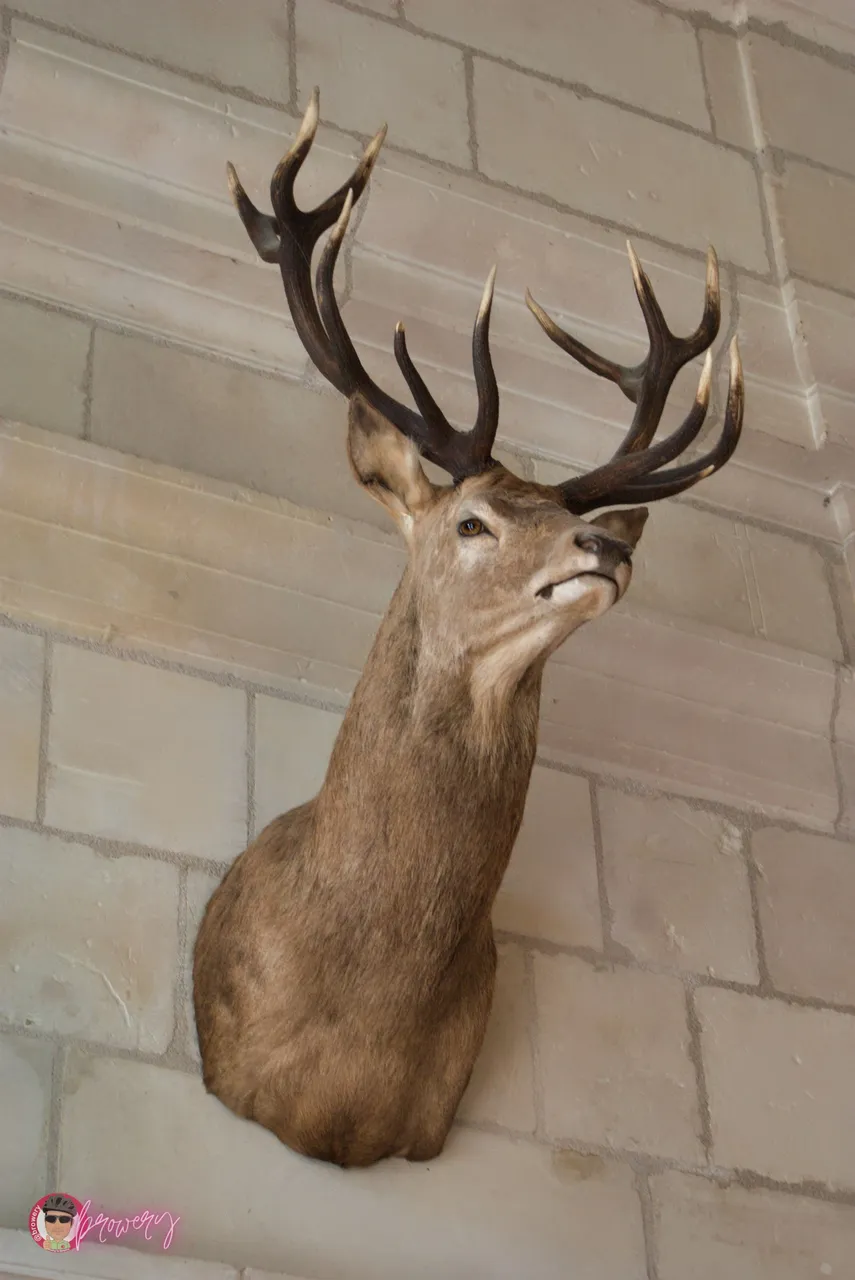 | 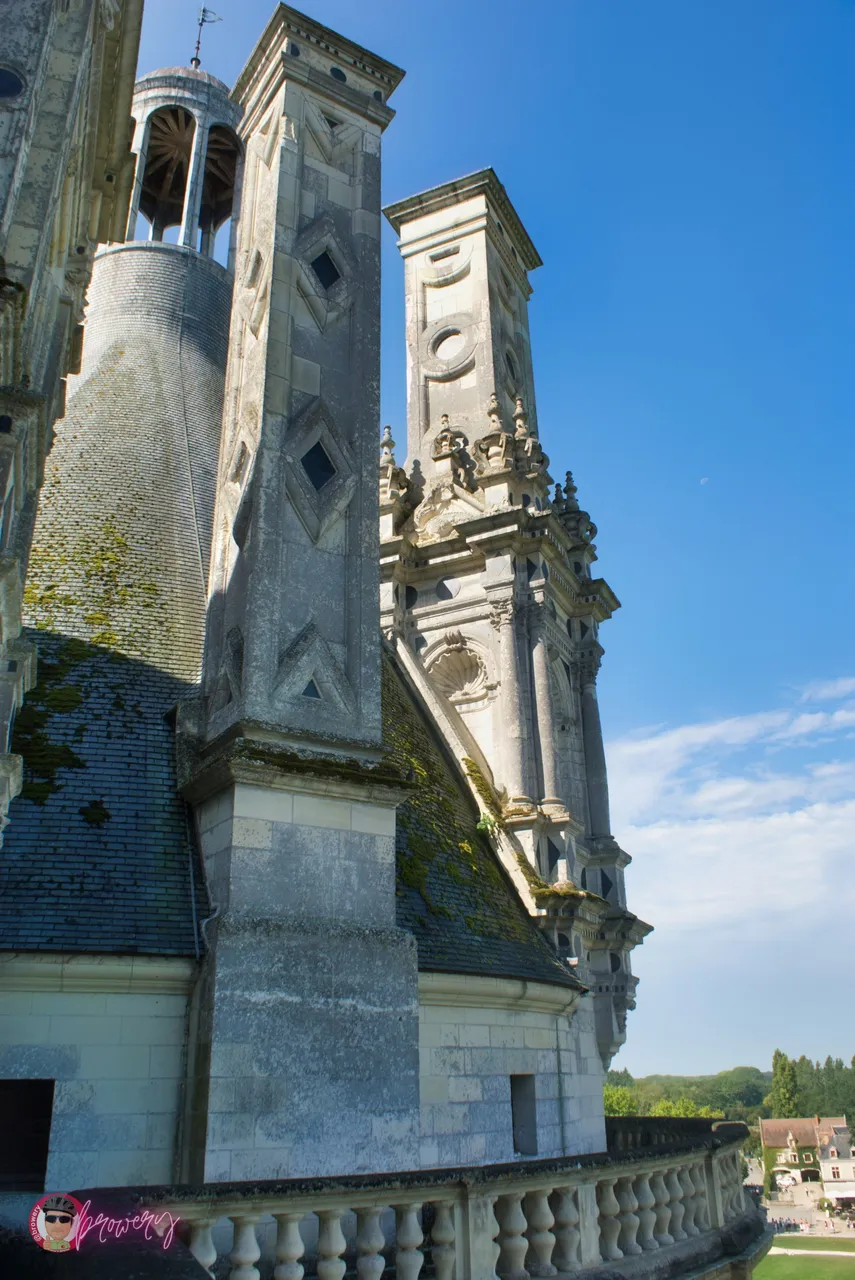 |
[EN] Nowadays, the notion of castles on the Loire is mainly a tourist notion, associated with this exceptional density of monuments to visit. However, their architectural specificity is that they are mostly built of tufa stone or brick with tufa stone parapets.
[PL] Obecnie pojęcie zamków nad Loarą jest głównie pojęciem turystycznym, związanym z tym wyjątkowym zagęszczeniem zabytków do zwiedzania. Jednak ich architektoniczną specyfiką jest to, że w większości zbudowane są z kamienia tufowego lub cegły z kamiennymi gzymsami tufowymi.
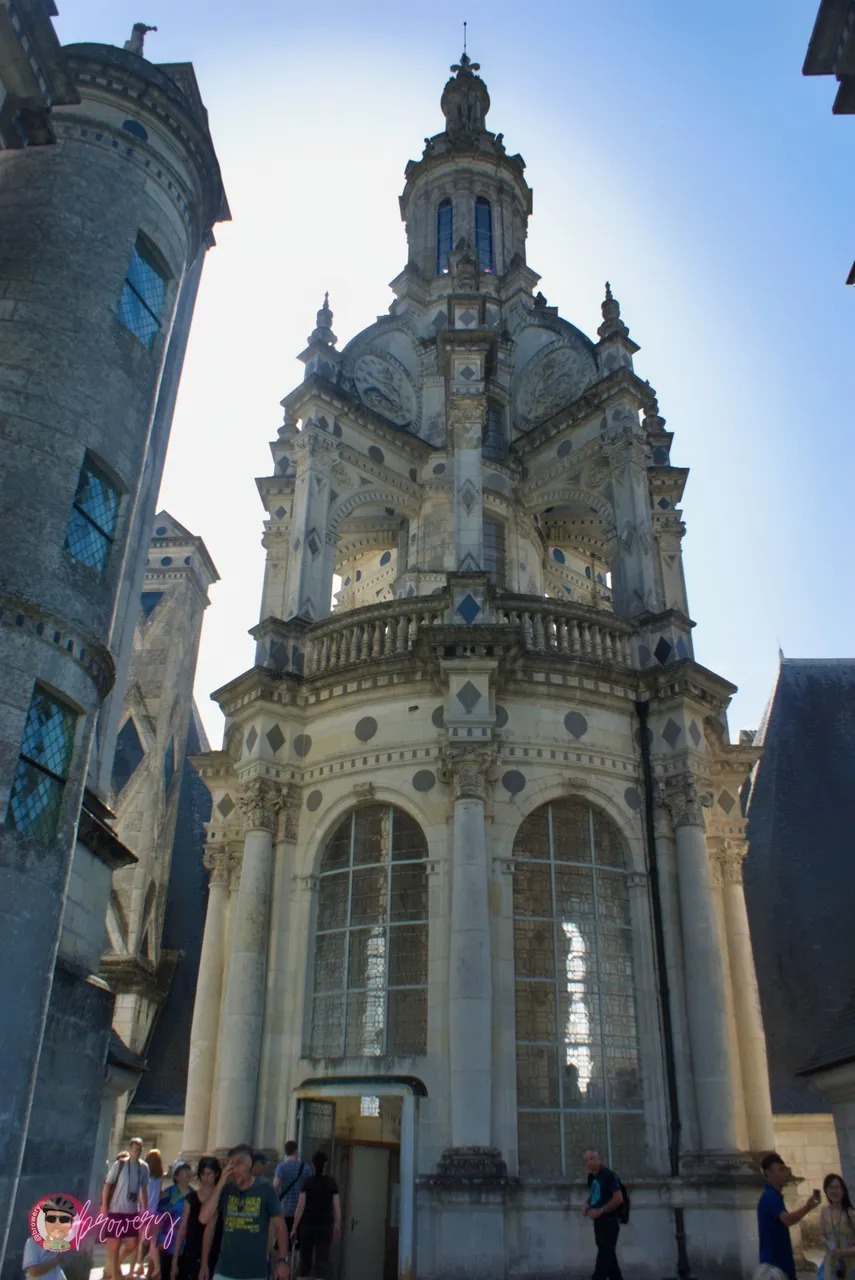 |  |
[EN] The largest castle on the Loire is le château de Chambord. Built in the heart of the largest enclosed forest park in Europe (around 50 km2), it is surrounded by a wall 32 kilometres long.
[PL] Największym zamkiem na Loarą jest le château de Chambord, który szczególnie wyróżnia się na tle innych zamków. Zbudowany w sercu największego zamkniętego parku leśnego w Europie jest otoczony murem o długości 32 kilometrów.
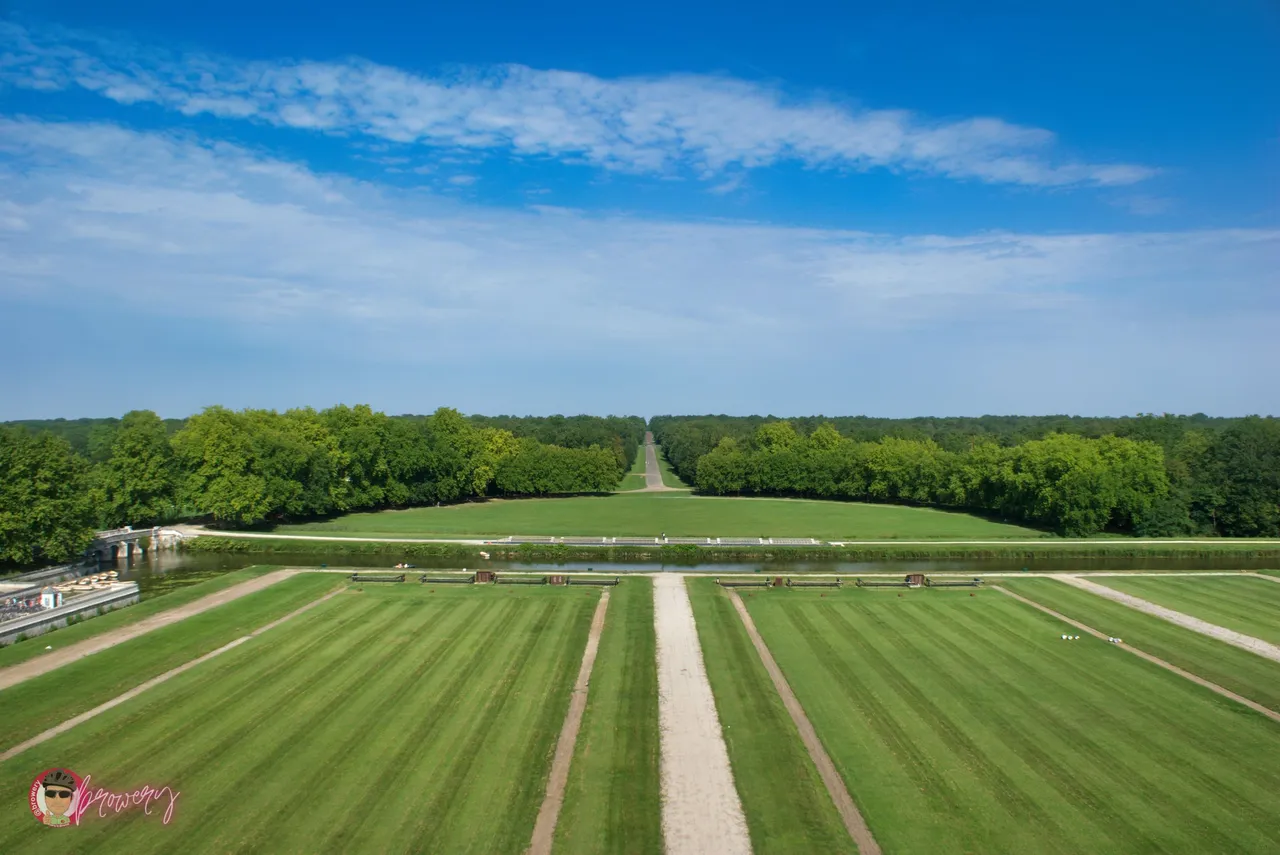
[EN] Chambord is the only royal estate that has remained intact since its creation. Construction of the chateau was begun by King Francis I in 1519, he invited Leonardo da Vinci to live in Amboise, it is believed that the master Leonardo sketched the initial plans for the chateau and suggested changing the course of the Loire so that it would flow past. Leonardo died before construction began; among the drawings he left behind was a sketch of a double spiral staircase, and a sketch of the building inscribed with the structure of a Greek cross - two characteristic elements of the original Chateau Chambord design. The building was completed in 1685 by Louis XIV.
[PL] Chambord jest jedyną królewską posiadłością, która została nienaruszona od czasu jej powstania. Budowę zamku rozpoczął król Franciszek I w 1519 roku, zaprosił Leonardo da Vinci do zamieszkania w Amboise, uważa się, że mistrz Leonardo naszkicował wstępne plany pałacu i zaproponował zmianę biegu Loary, żeby przepływała obok. Leonardo zmarł przed rozpoczęciem budowy, wśród rysunków, które pozostawił, znaleziono szkic z podwójnymi spiralnymi schodami, oraz szkic budowli wpisany w strukturę krzyża greckiego - dwa charakterystyczne elementy pierwotnego projektu zamku Chambord. Budowla została zakończona w 1685 roku przez Ludwika XIV.
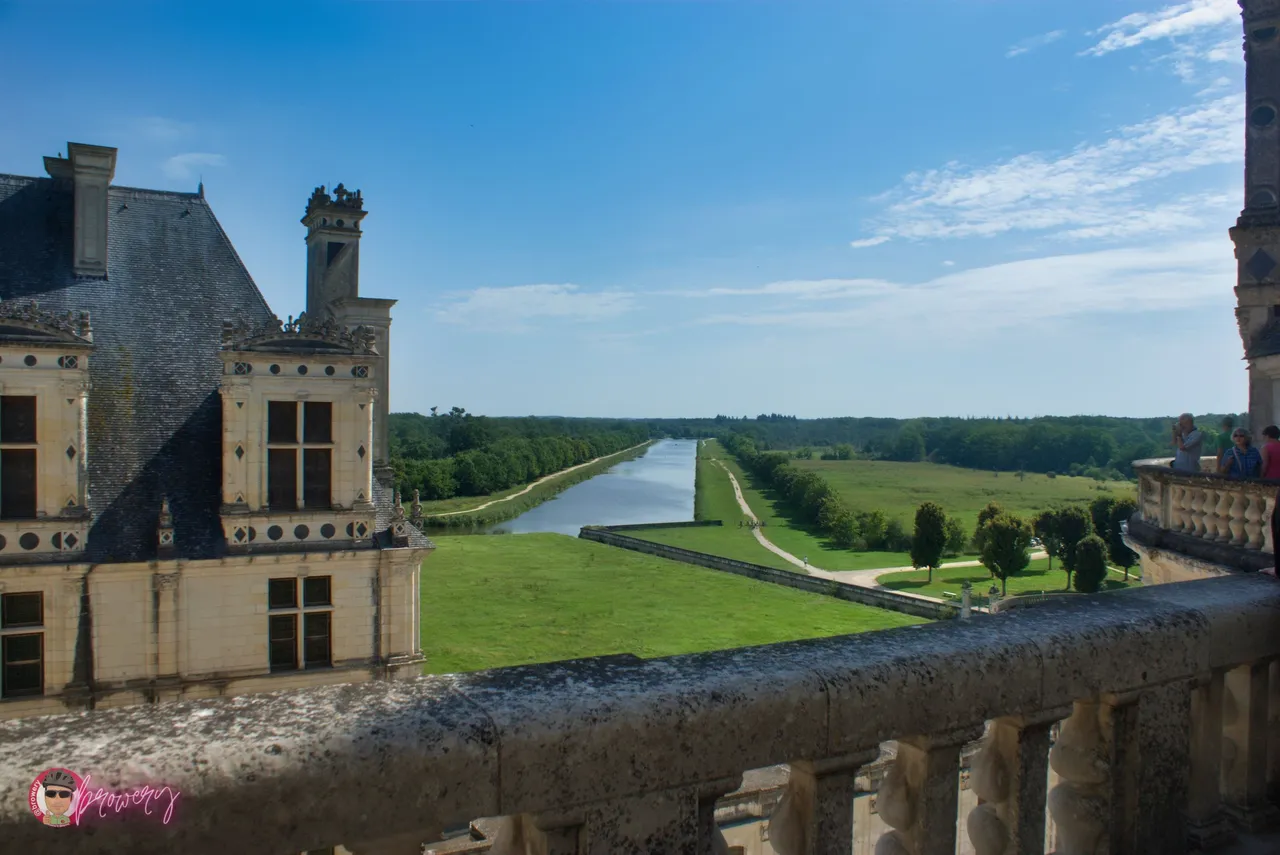
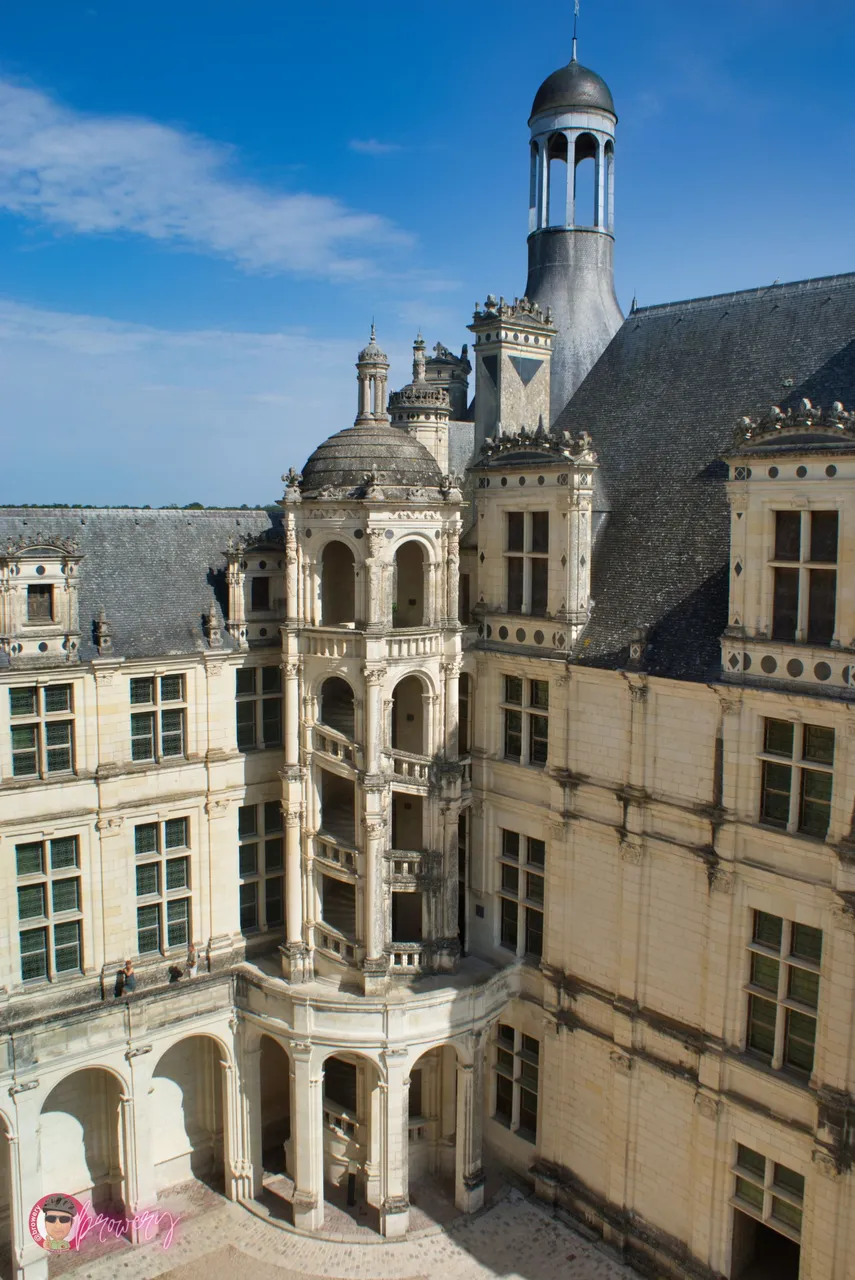 | 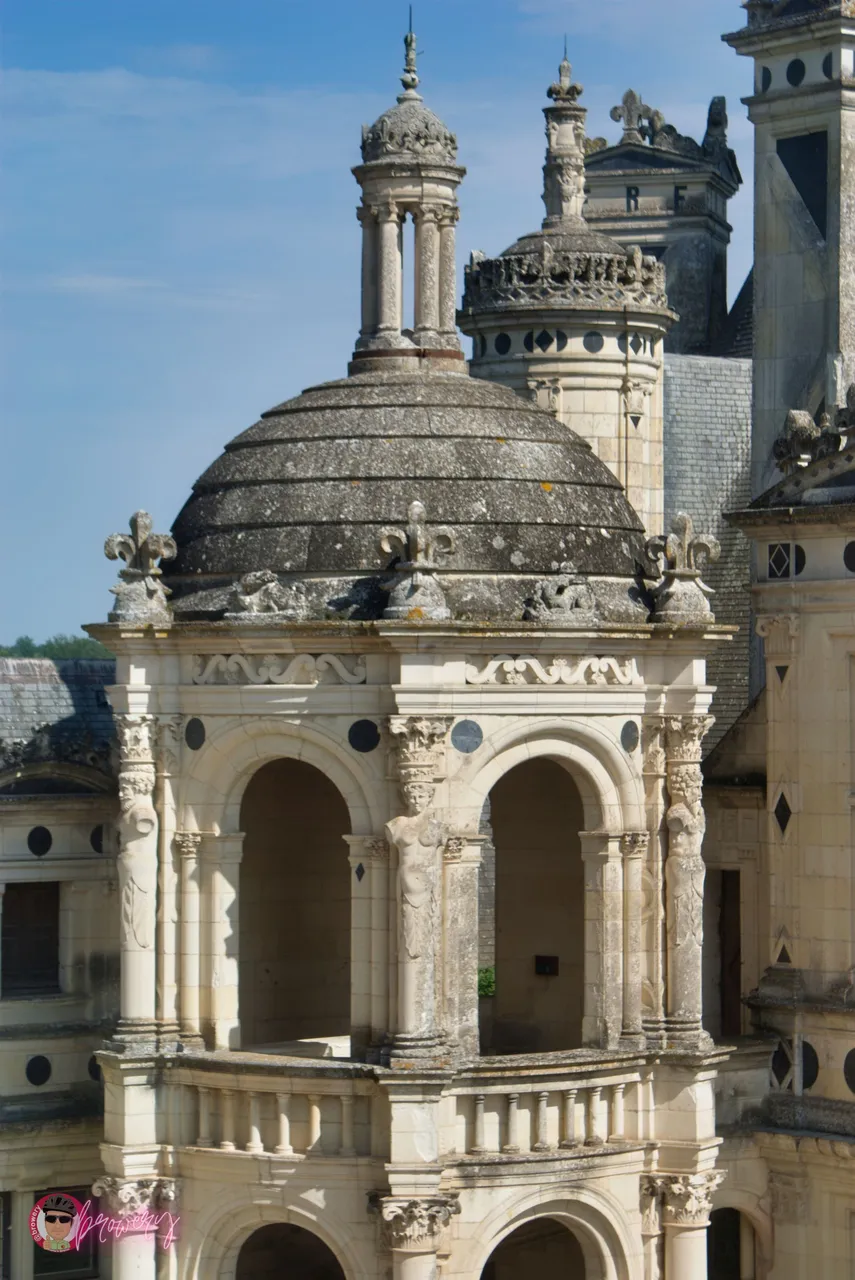 |
[EN] Designed on the model of medieval fortified castles with fences and large corner towers, clearly inspired by the Gothic style it has a very specific silhouette that makes it one of the architectural masterpieces of the Renaissance: 156 metres of facade, 56 metres high, a 44-metre dungeon, 426 rooms, 77 staircases, 282 fireplaces and 800 sculpted kapitels.
[PL] Zaprojektowany na wzór średniowiecznych zamków warownych z ogrodzeniem i wielkimi narożnymi wieżami, wyraźnie inspirowany stylem gotyckim posiada bardzo specyficzną sylwetkę, która czyni go jednym z architektonicznych arcydzieł renesansu: 156 metrów fasady, 56 metrów wysokości, 44-metrowy loch, 426 pomieszczeń, 77 klatek schodowych, 282 kominki i 800 rzeźbionych kapiteli.
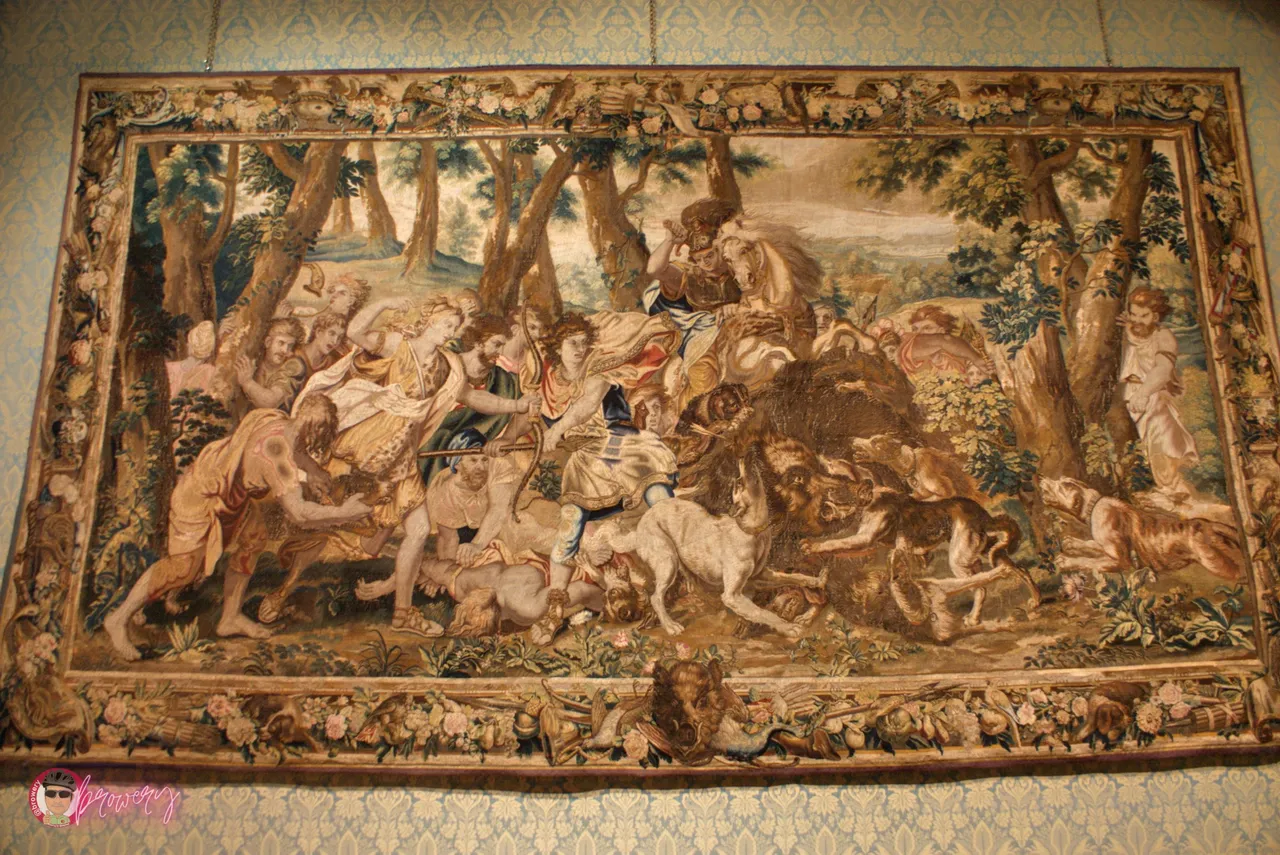

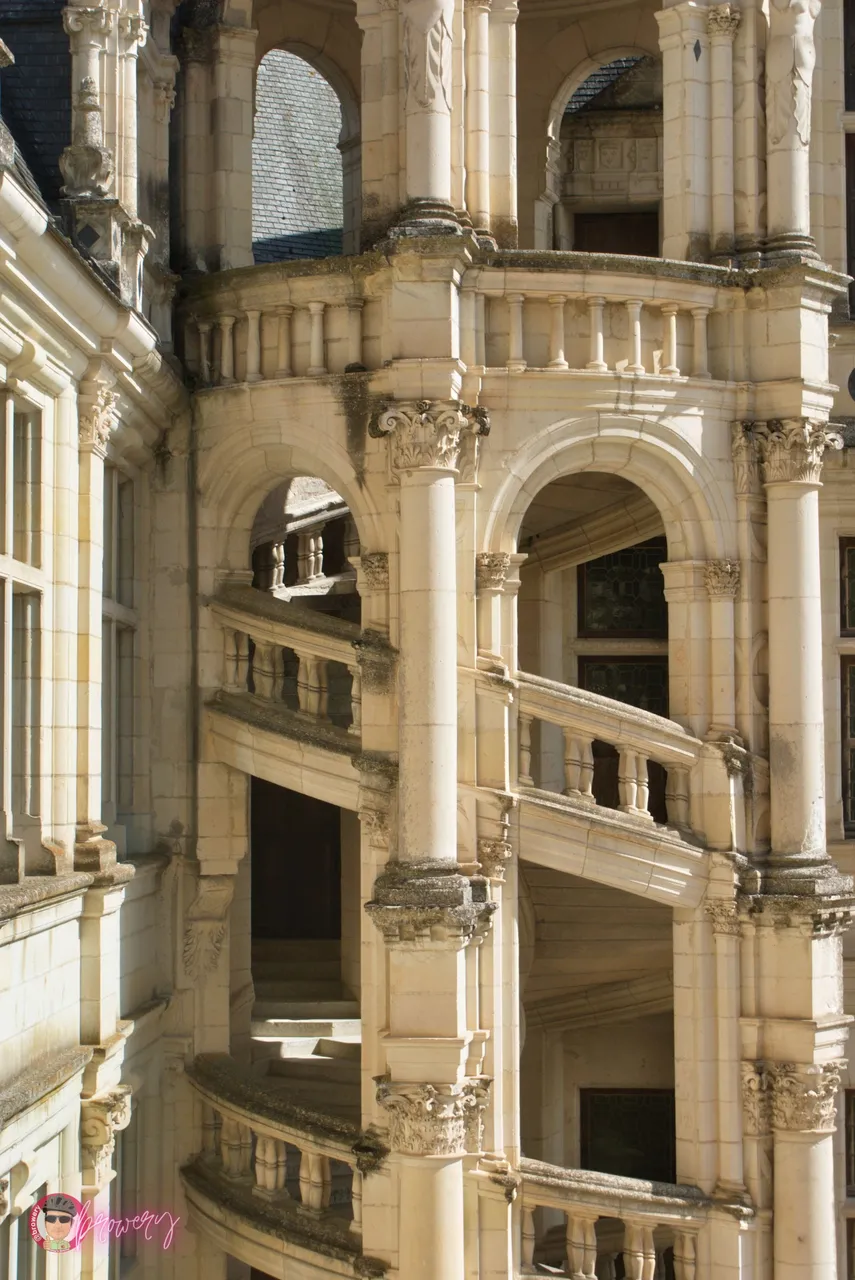 | 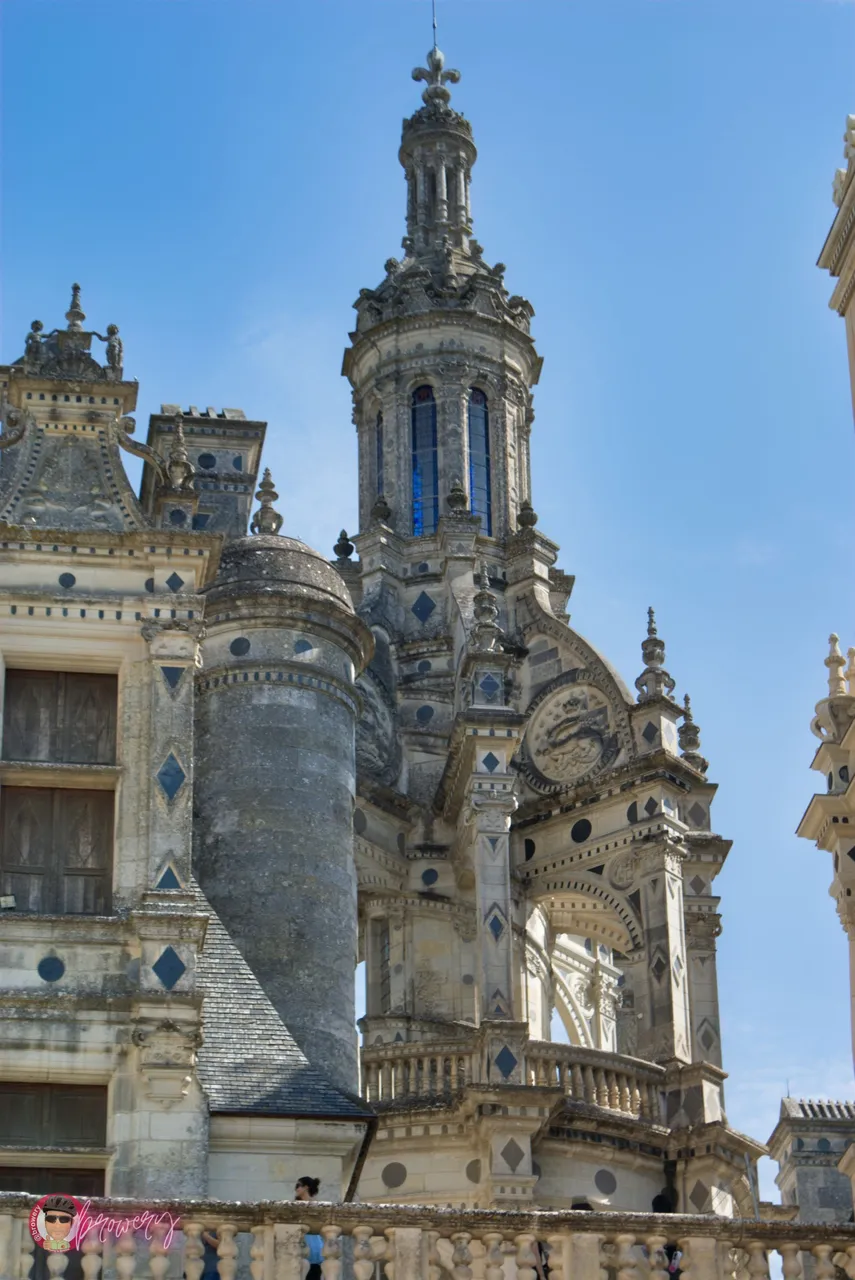 |
[EN] My only regret is that we started our tour of castles in the Loire Valley with Chambord, for each successive chateau we visited seemed like a small hunting lodge indeed next to it. The building is impressive, the spiral staircase in the shape of a double spiral in the central part was designed so that descending and ascending people could still see each other, but that they would not meet on the stairs.
[PL] Żałuję tylko, że zwiedzanie zamków w dolinie Loary zaczęliśmy od Chambord, bo każdy kolejny zamek, który odwiedzaliśmy wydawał się przy nim rzeczywiście niewielkim domkiem myśliwskim. Budowla jest imponująca, spiralna klatka schodowa w kształcie podwójnej spirali w centralnej części została tak zaprojektowana, żeby osoby schodzące i wchodzące ciągle się widziały, ale, żeby nie spotkały się na schodach.
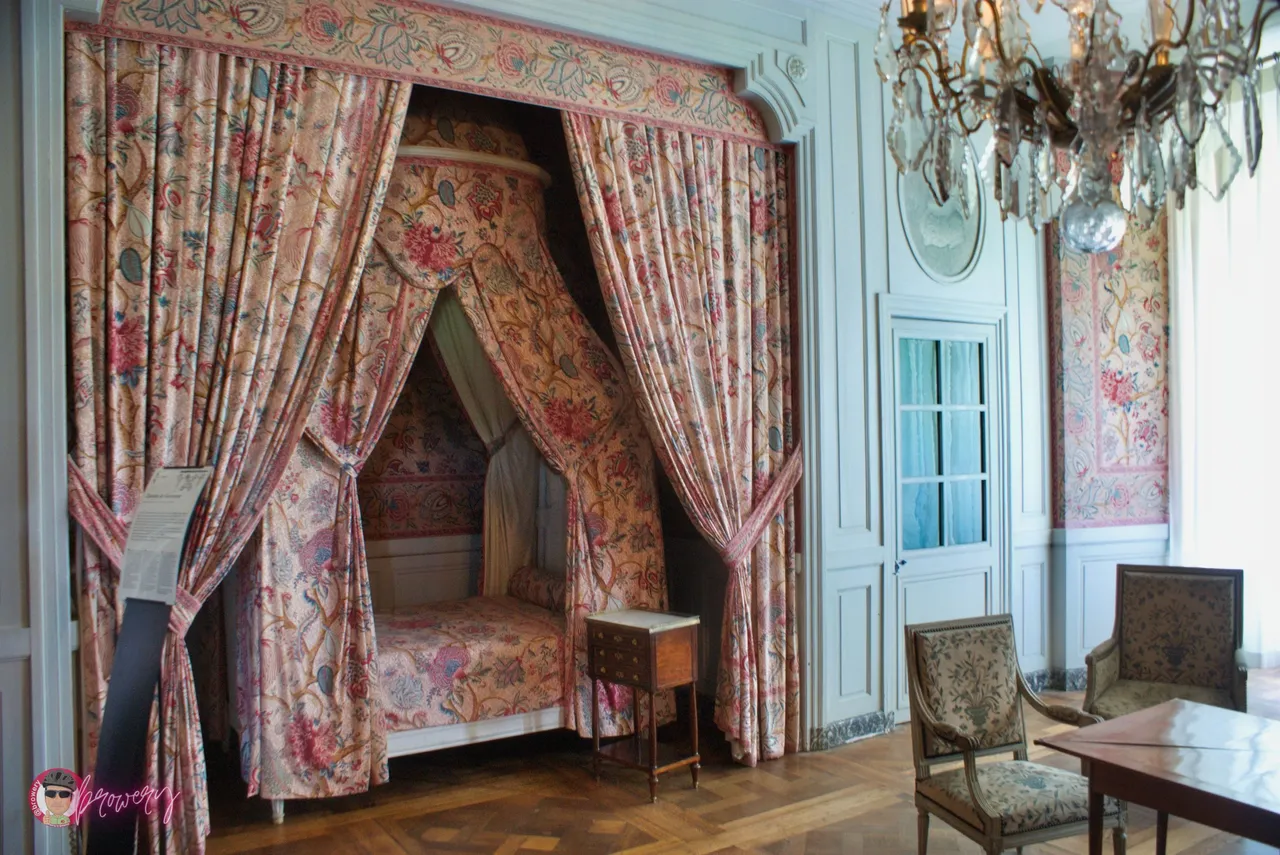
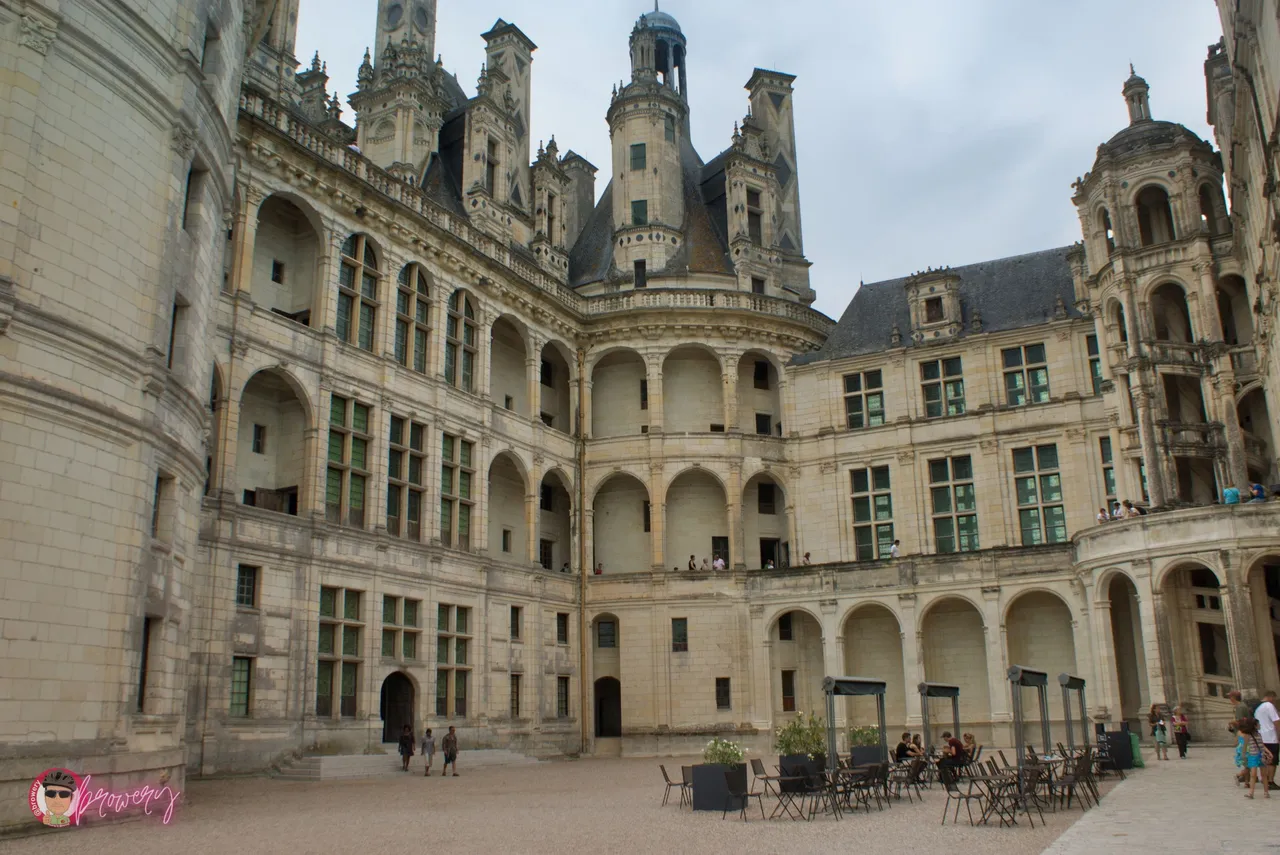
[EN] In my memories I will return to the castles of the Loire.
[PL] W swoich wspomnieniach wrócę jeszcze do zamków nad Loarę.

